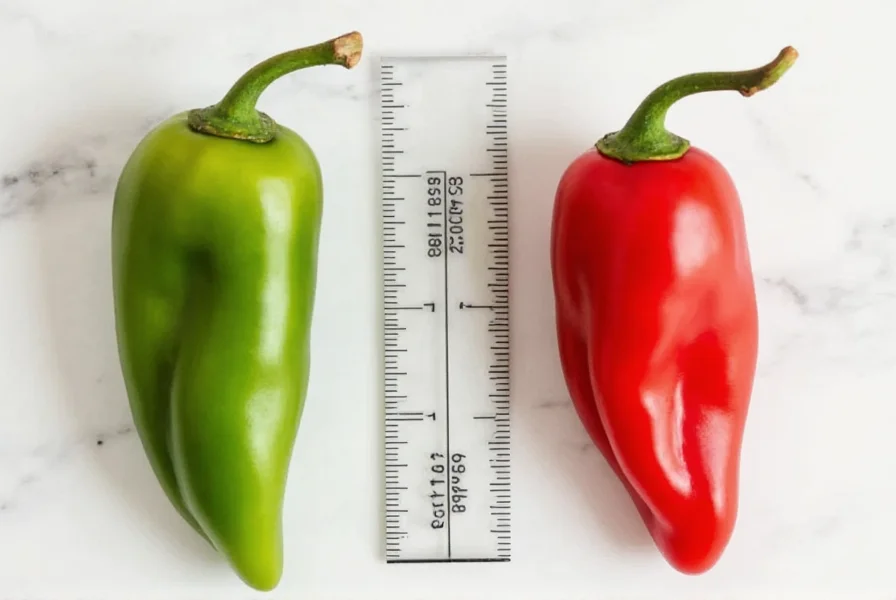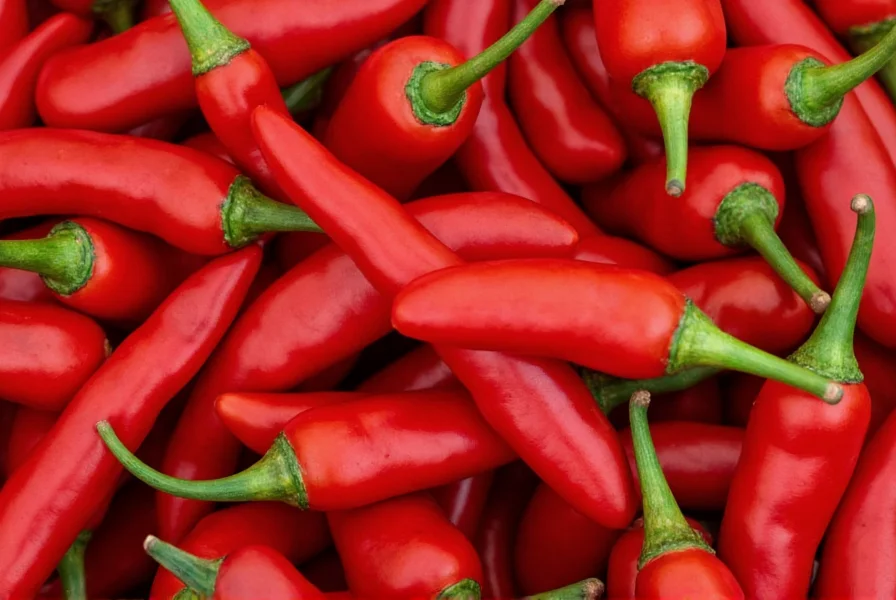Fresno chilies represent one of the most versatile medium-heat peppers in culinary applications, offering both flavor complexity and manageable heat. Understanding their precise position on the Scoville scale helps home cooks and professional chefs alike select appropriate peppers for various recipes without overwhelming heat.
Understanding the Scoville Scale for Pepper Heat Measurement
The Scoville scale, developed by pharmacist Wilbur Scoville in 1912, measures the pungency or "heat" of chili peppers. This measurement quantifies the concentration of capsaicinoids—the chemical compounds responsible for the burning sensation we experience when eating spicy foods. Originally determined through human taste testing, modern laboratories now use high-performance liquid chromatography for precise measurements, though results are still expressed in Scoville Heat Units (SHU) for consistency.
Pepper heat can vary significantly based on multiple factors including soil conditions, climate, water availability, and even the specific plant's genetics. This natural variation explains why two Fresno chilies from the same plant might register different heat levels on the Scoville scale.
Fresno Chili Characteristics and Heat Profile
Fresno chilies (Capsicum annuum) resemble smaller, tapered jalapeños and mature from green to vibrant red. Their heat profile sits firmly in the medium range, making them accessible to those developing their spice tolerance while still providing noticeable warmth. The green varieties typically register at the lower end of their heat range (2,500-5,000 SHU), while fully mature red Fresnos often reach the higher end (7,000-10,000 SHU).
What distinguishes Fresno chilies from similar peppers is their complex flavor profile that combines moderate heat with bright, slightly fruity notes. This balance makes them particularly valuable in dishes where you want pepper flavor without overwhelming spiciness.
| Pepper Variety | Scoville Heat Range (SHU) | Relative Heat Level |
|---|---|---|
| Fresno Chili | 2,500-10,000 | Medium |
| Jalapeño | 2,500-8,000 | Medium |
| Serrano | 10,000-23,000 | Medium-Hot |
| Habanero | 100,000-350,000 | Very Hot |
Comparing Fresno Chilies to Similar Varieties
When evaluating fresno chili scoville measurements against comparable peppers, several key distinctions emerge. While often confused with jalapeños, Fresnos generally maintain a slightly milder average heat level though their maximum potential heat can overlap with jalapeños. The primary difference lies in flavor profile—Fresnos offer more fruitiness with less grassy notes than jalapeños.
Serrano peppers consistently outrank Fresnos in heat intensity, typically starting where the hottest Fresnos end. This makes Serranos inappropriate substitutions when a recipe specifically calls for the more moderate heat of Fresnos. Understanding these subtle but important differences in scoville heat scale ratings prevents culinary disasters when substituting peppers.

Factors Influencing Fresno Chili Heat Levels
Several environmental and biological factors affect the actual heat level of individual Fresno chilies:
- Maturity stage: Green Fresnos are consistently milder than their fully ripened red counterparts
- Stress conditions: Plants experiencing moderate water stress often produce hotter peppers
- Soil composition: Higher mineral content, particularly calcium, can increase capsaicin production
- Climate: Warmer temperatures generally correlate with higher heat levels in mature peppers
- Seed placement: The placenta (white ribs) and seeds contain the highest concentration of capsaicin
When working with fresno chili peppers scoville measurements in mind, removing the seeds and white membranes significantly reduces the perceived heat while preserving much of the pepper's distinctive flavor.
Culinary Applications Based on Heat Level
The moderate heat profile of Fresno chilies makes them exceptionally versatile in the kitchen. Their fresno chili scoville rating allows them to enhance dishes without dominating other flavors—a quality that distinguishes them from hotter alternatives. Chefs frequently use them in salsas, sauces, and relishes where jalapeños might prove too intense for broader audiences.
Red Fresnos work particularly well in cream-based sauces, where their slight fruitiness complements dairy without overwhelming heat. Green Fresnos excel in fresh preparations like pico de gallo or as a garnish for tacos, providing visual appeal and moderate heat. Understanding the specific scoville heat units of your peppers allows for precise heat management in recipe development.

Growing Conditions and Heat Management
Gardeners seeking to control the heat level of their homegrown Fresno chilies can manipulate several factors. Consistent watering produces milder peppers, while allowing the soil to dry slightly between waterings increases capsaicin production. Providing ample sunlight and warm temperatures encourages full development of both flavor and heat.
For those cultivating fresno chili peppers scoville characteristics, harvesting timing proves crucial. Picking peppers when they're still green yields milder results, while allowing them to fully ripen to red increases both sweetness and heat. This flexibility makes Fresnos valuable for gardeners wanting to experiment with different heat profiles from the same plant.
Practical Tips for Working with Fresno Chilies
When incorporating Fresno chilies into your cooking based on their scoville heat measurement:
- Always wear gloves when handling hot peppers to prevent skin irritation
- Start with half a pepper in recipes, then adjust to taste—remember that heat builds over time
- Balance heat with dairy products (yogurt, sour cream) or acidic components (lime juice)
- Roasting Fresnos enhances their natural sweetness while slightly reducing perceived heat
- Freezing actually increases pepper heat temporarily—thaw completely before use
Understanding the precise fresno chili scoville range helps prevent over-spicing dishes while still capturing the distinctive flavor these peppers offer. Their position on the scoville heat units spectrum makes them an excellent choice for those developing their spice tolerance or creating dishes for mixed-heat-preference audiences.











 浙公网安备
33010002000092号
浙公网安备
33010002000092号 浙B2-20120091-4
浙B2-20120091-4